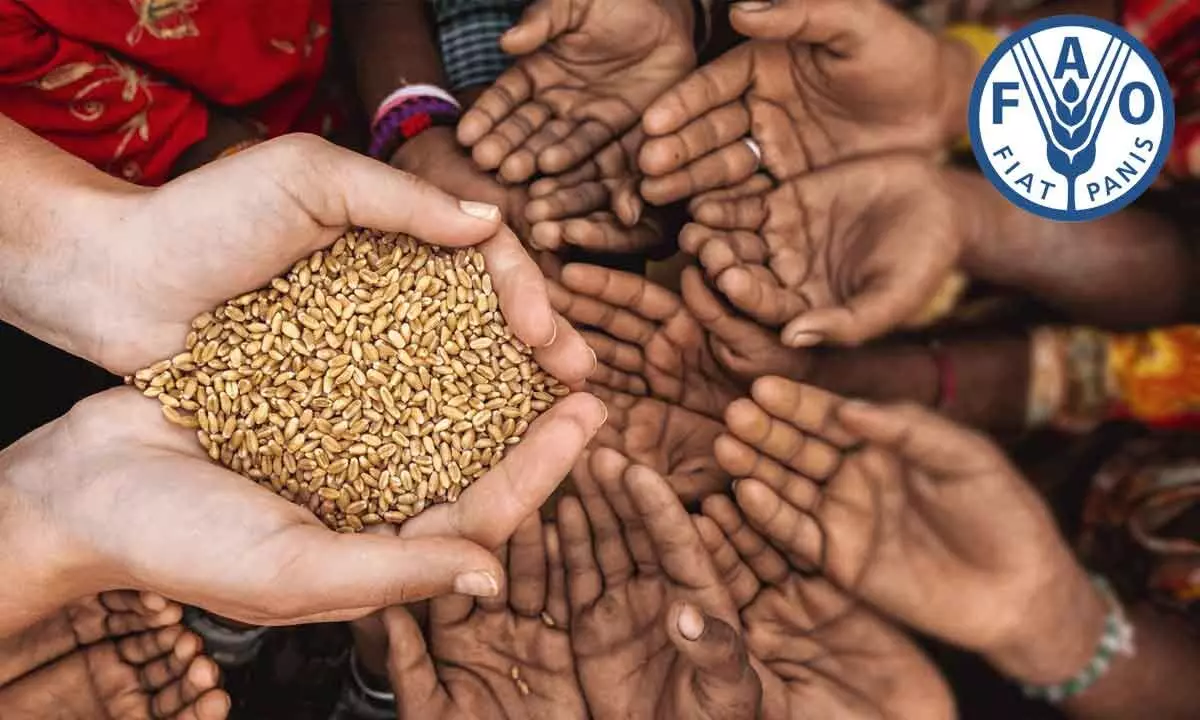World at serious risk of food access crisis: FAO

The pandemic, global interruption to supply chains, rising costs of major primary commodities, conflicts and humanitarian crises threaten the functioning of world agrifood systems, QU Dongyu, Director-General of the Food and Agriculture Organisation of the United Nations (FAO), said.
The pandemic, global interruption to supply chains, rising costs of major primary commodities, conflicts and humanitarian crises threaten the functioning of world agrifood systems, QU Dongyu, Director-General of the Food and Agriculture Organisation of the United Nations (FAO), said.
"We are at serious risk of facing a food access crisis now, and probably a food availability crisis for the next season. All this has put at risk our efforts to achieve the SDGs," Qu said at the opening of the 2022 United Nations High-Level Political Forum on Sustainable Development (HLPF) in New York on Tuesday.
The HLPF is the main United Nations platform for following up and reviewing the 2030 Agenda for Sustainable Development and the Sustainable Development Goals on the global level.
"We must prevent the acceleration of acute food insecurity trends in the coming months and years," Qu said.
The FAO Director-General outlined measures to be taken by the international community to address the situation. These include food production at the country-level must be expanded, cash and critical inputs are needed for cereal and vegetable production and to protect livestock with treatments, vaccinations, feed and water and agrifood supply chains and value chains must be strengthened with the engagement of the public and the private sectors, to support smallholder farmers and households.
In addition, livelihoods, agrifood systems and economies need protection against future shocks.
Speaking later in the day at the FAO-led side event, "Agrifood Systems Transformation for a Resilient World: Responding to Global Crises," Qu said, "We only have eight years before our agreed timeline to implement the 2030 Agenda and the SDGs. We have no time to lose."
Qu summarised the scale of the task ahead, pointing to the impacts of the pandemic, conflicts, and the cumulative loss to the global economy of more than $12 trillion in 2020 and 2021, setting back progress on the SDGs.
To overcome these problems, he outlined four main areas that need attention: Investment in the countries most in need; policies that increase productivity and protect natural resources; ensuring more efficient use of available inputs and outputs; and the importance of innovation, science and research.
Timely food aid is required but there needs to be more attention on producing nutritious food locally, FAO advocates. Only eight per cent of all food security funding in emergencies goes to assist agricultural production but investing in agriculture and rural livelihoods is seven to 10 times more cost-effective than traditional assistance.
"We must put policies in place that both increase productivity and protect natural resources," Qu said.
Qu also spoke of the need to ensure better and more efficient use of available outputs and inputs, citing the examples of global water stress, food loss and waste, and using fertilizer more efficiently.
Around one billion hectares of land face severe water constraints and almost 800 million hectares of rainfed cropland and pastureland are severely affected by recurring drought.
Better use of the best technology and regulation for the efficient use of water in agriculture is needed.

















